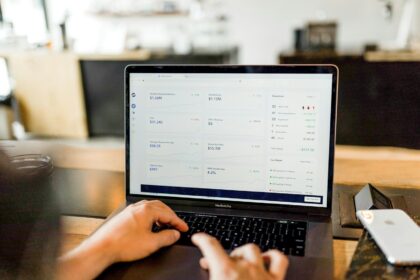Start by identifying unused equipment, tools, or space around your home or workplace. These tangible possessions can become steady sources of additional earnings without requiring new investments. For example, renting out seldom-used machinery or offering storage areas can convert dormant assets into productive cash flow.
Analyze the potential value of each item and determine practical ways to monetize them. Simple steps like listing tools on local lending platforms or sharing workspace during off-hours can generate a reliable revenue stream. This approach maximizes the return on belongings that would otherwise remain idle.
Tracking and managing these contributions efficiently is key. Maintain clear records of what is available and monitor usage patterns to optimize availability and profitability. Leveraging existing physical resources thoughtfully transforms everyday belongings into valuable financial opportunities.
Resource Income: Sharing What You Have
Utilizing underused equipment or tools can generate additional earnings by leasing or lending these assets. For instance, GPU rigs dedicated to cryptocurrency mining often remain idle during non-peak periods; renting their computational power through decentralized platforms optimizes asset utilization and creates a supplementary revenue stream. Similarly, physical space such as storage or parking spots can be monetized via sharing economy applications, transforming dormant resources into consistent cash flow.
Cloud-based solutions offer another method to capitalize on existing technological infrastructure. By allocating surplus server capacity to blockchain networks or distributed computing projects, owners can receive tokens or payments proportional to contributed resources. This approach leverages the scalability of digital environments and democratizes access to earning opportunities without significant upfront investment in new hardware.
Maximizing Technical Assets for Earnings
Equipment optimization requires careful assessment of operational costs versus projected returns. For example, mining rigs must consider electricity expenses alongside hash rates and network difficulty metrics to ensure profitability. Tools like profitability calculators and real-time monitoring dashboards help evaluate whether continued deployment is financially viable, enabling informed decisions about resource allocation.
Storage spaces integrated with IoT sensors provide transparent reporting on usage patterns and availability, facilitating trust between providers and consumers in peer-to-peer marketplaces. Platforms such as Filecoin demonstrate how decentralized storage incentivizes participants by rewarding allocated disk space, illustrating a model where technical assets convert directly into measurable income streams without intermediaries.
- Leasing unused hardware: Renting GPUs or CPUs for scientific computations or AI training.
- Lending software licenses: Temporarily granting access to specialized tools during off-peak times.
- Sharing bandwidth: Contributing excess internet speed for mesh networks in exchange for tokens.
Diversifying asset utilization mitigates risks associated with single-use deployments and stabilizes supplemental earnings. Employing smart contracts automates agreements governing sharing terms, ensuring transparency and security while reducing administrative overhead. These programmable contracts execute predefined conditions automatically upon fulfillment of criteria such as payment confirmation or resource availability.
The integration of blockchain technology enhances verification processes for shared assets by recording transactions immutably and providing audit trails accessible to all stakeholders. This transparency builds confidence among users engaging in temporary exchanges of tangible or intangible goods, fostering wider acceptance of alternative income models based on collaborative resource utilization rather than ownership accumulation alone.
Identifying Shareable Personal Assets
Start by evaluating tangible and intangible possessions that can generate additional returns through collaborative use. Physical space such as spare rooms, garages, or parking spots are prime examples of underutilized assets capable of producing supplementary earnings without significant upfront investment. For instance, platforms enabling short-term rental of residential spaces have demonstrated consistent growth in revenue generation by maximizing idle property capacity.
Next, consider electronic equipment and specialized tools that remain idle for extended periods but hold considerable value when lent or leased. High-demand items like cameras, 3D printers, or even drones can be monetized efficiently by granting temporary access to others needing these devices for specific tasks. This approach reduces acquisition costs for borrowers while creating an ongoing return stream for owners.
Evaluating Digital Tools and Subscriptions
Access to licensed software, cloud storage plans, or premium online services represents another category of shareable assets. Many subscriptions allow multiple user accounts or simultaneous connections, presenting opportunities to distribute costs among several participants. For example, splitting expenses for advanced data analysis platforms or blockchain nodes can optimize resource utilization and lower individual expenditures significantly.
Furthermore, intellectual property such as proprietary codebases, educational content, or algorithmic trading strategies are valuable digital commodities suitable for limited sharing arrangements. Controlled licensing agreements ensure the originator maintains rights while others benefit from usage privileges. Blockchain-based smart contracts provide transparent frameworks for managing these interactions securely and automatically.
- Space: unused rooms and storage areas
- Equipment: professional cameras, fabrication tools
- Tools: licensed software suites, cloud resources
- Digital assets: intellectual property with regulated access
A technical case study involves co-working facilities leveraging communal equipment and office space to distribute operational expenses among members effectively. By integrating IoT sensors to monitor asset usage in real time, they increase transparency and fairness in cost allocation processes. This methodology results in optimized capital deployment and enhanced participant satisfaction.
Cultivating awareness about which possessions qualify as shareable assets enables more strategic decisions regarding collaboration opportunities and passive earnings generation. Identifying items with high utility but low personal demand opens avenues for mutual benefit within decentralized economic models supported by blockchain verification systems ensuring trustworthiness in transactions.
Setting Up Online Rental Platforms
To launch an effective online rental platform, the initial step involves selecting robust tools that facilitate seamless asset management and user interaction. Platforms must integrate secure payment gateways, real-time booking systems, and transparent review mechanisms to ensure trust and operational efficiency. Leveraging blockchain technology can enhance transparency by creating immutable records of transactions, reducing disputes related to equipment or space rentals.
Optimizing the utilization of underused assets such as tools, equipment, or physical locations directly contributes to generating steady revenue streams. For instance, renting out specialized machinery during idle periods maximizes profitability while providing renters access to costly resources without long-term ownership. Implementing dynamic pricing algorithms based on demand patterns further improves asset turnover and overall platform viability.
Technical Architecture and User Experience Considerations
A scalable technical architecture must support multiple categories of rentable items–ranging from workspace areas to professional gear–allowing for flexible cataloging and categorization. Microservices architectures paired with RESTful APIs enable modular development and easier integration with third-party services like identity verification or logistics providers. User interfaces should prioritize clarity, allowing individuals unfamiliar with digital rentals to navigate effortlessly through available listings and booking options.
Case studies demonstrate that platforms incorporating peer-to-peer insurance solutions mitigate risks associated with lending valuable possessions. For example, decentralized finance (DeFi) protocols offer innovative models where collateralized deposits protect lenders against damage or loss. Combining these financial safeguards with geo-tagging features enhances accountability when sharing tangible assets across communities.
Pricing Strategies for Shared Resources
Determining the optimal pricing model for distributing equipment and assets requires analyzing utilization rates, operational costs, and market demand. A dynamic pricing approach can maximize returns by adjusting fees based on peak usage hours or resource scarcity. For example, coworking spaces often apply hourly or daily rates that fluctuate according to occupancy levels, ensuring efficient monetization of available space without deterring potential users.
Flat-rate pricing provides simplicity but may lead to underutilization or lost revenue opportunities if asset availability varies. Implementing tiered pricing based on access levels or feature sets allows providers to cater to different user segments effectively. Consider tools lending platforms that offer basic equipment at lower rates while charging premium fees for advanced machinery with higher maintenance expenses.
Key Pricing Models and Their Applications
Cost-plus pricing calculates fees by adding a fixed margin over the total expenses incurred in maintaining shared assets. This method ensures coverage of depreciation, repairs, and administrative efforts while generating predictable earnings. For instance, blockchain-based rental protocols incorporate smart contracts that automate fee distribution aligned with this principle, enhancing transparency and trust among participants.
Value-based pricing leverages perceived benefits rather than direct costs, setting prices according to how much consumers are willing to pay for convenience or exclusivity. An example is decentralized data storage networks where contributors price their disk space depending on geographic location, redundancy level, and network reputation metrics. Such strategies incentivize quality provision while balancing supply-demand dynamics.
- Subscription models: Monthly or annual access fees granting unlimited use within agreed limits; common in software tool sharing services.
- Pay-per-use: Charges proportional to actual consumption time or quantity; suitable for heavy equipment rentals with fluctuating demand.
- Auction systems: Competitive bidding determines fair market value dynamically; applied in NFT marketplaces representing fractional ownership of physical assets.
An effective strategy often combines multiple approaches tailored to specific contexts. For example, a facility renting out specialized machinery might charge a base subscription plus variable fees dependent on operational hours logged via IoT sensors embedded in the devices. This hybrid system balances steady cash flow with fair cost allocation reflecting real usage patterns.
Careful monitoring using analytics tools helps optimize these pricing mechanisms continuously. Data collected from blockchain transactions or asset management platforms provide insights into user behavior trends and asset performance indicators. Regularly updating price tiers based on such feedback prevents obsolescence of tariffs and maintains competitive positioning within the ecosystem of shared goods and infrastructure.
Managing Legal and Tax Requirements
Properly handling regulatory and fiscal obligations related to shared assets and equipment is critical to maintaining compliance and avoiding penalties. Any earnings generated from lending or leasing physical or digital holdings must be accurately reported according to jurisdiction-specific laws. This includes declaring revenue derived from utilizing idle capacity, such as storage space or computing power, which can often be overlooked but is taxable in many territories.
When allocating hardware or other tangible resources for collaborative projects or commercial use, clear documentation of ownership percentages and transaction details helps clarify tax liabilities. Blockchain technology itself can support transparent record-keeping of these arrangements, ensuring all parties have verifiable proof of contributions and distributions. Such data is invaluable during audits or legal reviews concerning asset utilization and profit sharing.
Key Compliance Steps for Shared Assets
- Identify taxable events: Recognize when transfers or leases of property trigger reporting duties, including non-traditional forms like tokenized possessions.
- Calculate net returns: Deduct allowable expenses related to maintenance, depreciation, or operational costs before declaring taxable amounts.
- Register appropriate entities: Ensure that the business structure managing shared equipment aligns with local tax policies, whether through partnerships, corporations, or trusts.
- Maintain detailed records: Use digital ledgers combined with physical receipts to track all exchanges involving shared belongings and generated earnings.
A practical example involves a co-working facility renting out unused office space equipped with networked servers. Revenues from these offerings must be tallied separately from other activities since they represent distinct sources of financial gain subject to specific tax codes. Similarly, cryptocurrency miners pooling computational power should agree on profit splits beforehand and report their portions accordingly.
Legal frameworks frequently evolve around emerging technologies that enable fractional access to valuable commodities. Staying informed about changes in asset classification–such as whether certain tokens qualify as securities–prevents inadvertent violations. Consulting specialized advisors familiar with both blockchain intricacies and taxation statutes supports optimal management of distributed resources while minimizing risk exposure.
Building Trust with Renters: A Technical Conclusion
Establishing reliable frameworks for allocating unused space and equipment significantly enhances transparency between asset holders and renters. Implementing blockchain-based smart contracts ensures that all parties can verify terms and transactions in real time, reducing disputes and fostering confidence in the arrangement.
Integrating decentralized identity protocols and reputation systems further strengthens trust by securely validating participants’ credibility without exposing sensitive data. This approach transforms underutilized assets into verifiable streams of value, optimizing utilization and generating consistent returns from dormant holdings.
Key Technical Insights and Future Directions
- Tokenization of Physical Assets: Converting tangible resources such as machinery or workspace into digital tokens enables fractional access rights, allowing multiple renters to share usage efficiently while maintaining clear ownership records on-chain.
- Automated Payment Systems: Leveraging stablecoin micropayments tied to usage metrics recorded by IoT sensors enhances accuracy in compensation, aligning payments directly with consumption patterns without manual intervention.
- Dynamic Access Control: Smart locks integrated with blockchain authorization protocols provide secure, time-bound entry to leased spaces or devices, eliminating risks related to unauthorized use.
- Data Transparency & Auditability: Distributed ledger technology guarantees immutable logs of all interactions involving rented assets, creating a tamper-proof history that supports dispute resolution and regulatory compliance.
The convergence of these technologies will redefine how owners monetize their idle holdings while offering renters trustful environments backed by cryptographic proof. As ecosystems mature, expect standardized platforms facilitating seamless onboarding and scalable participation across industries–from commercial real estate to specialized equipment leasing. This evolution promises not only optimized asset utilization but also democratized access to valuable infrastructure previously limited by traditional barriers.





